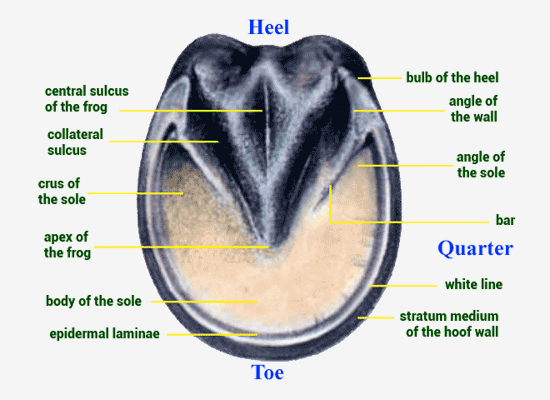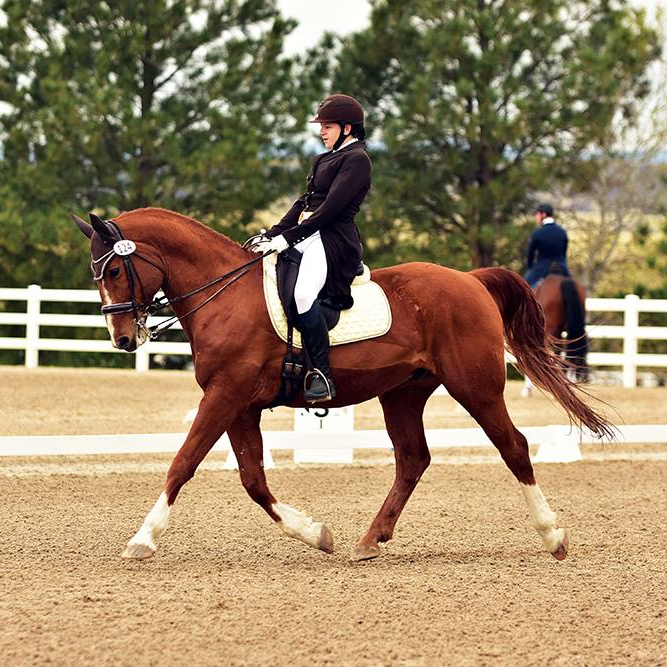The hoof is one of the most important parts of the horse, without a good hoof, we have no horse “no hoof, no horse”. So it is important to understand what comprises the hoof, as well as some potential issues you may face with your horse’s hooves.
A hoof (/ˈhuːf/ or /ˈhʊf/), plural hooves (/ˈhuːvz/ or /ˈhʊvz/) or hoofs /ˈhʊfs/, is the tip of a toe of an ungulate mammal, strengthened by a thick, horny, keratin covering.
A horse hoof is a structure surrounding the distal phalanx of the 3rd digit (digit III of the basic pentadactyl limb of vertebrates, evolved into a single weight-bearing digit in equids) of each of the four limbs of Equus species, which is covered by complex soft tissue and keratinised (cornified) structures. Since a single digit must bear the full proportion of the animal’s weight that is borne by that limb, the hoof is of vital importance to the horse. The phrase “no hoof, no horse” underlines how much the health and the strength of the hoof is crucial for horse soundness.
There are several disorders and injuries that can affect the equine hoof. Laminitis and navicular disease are two of the most serious. Thrush and white line disease (common bacterial infections) can become serious if left untreated. Quiltor, an infection of the lower leg that can travel under the hoof, is also sometimes seen, although most commonly in draft horses.
Quarter cracks are vertical splits in a hoof wall, most commonly seen on the inside of the front hooves or the outside of the hind hooves. They can result from poor shoeing and management practices, natural hoof conformation, or injuries to the leg and hoof.
One of the more common and less serious hoof issues we face as horse owners, are abscesses. An abscess can cause sudden and severe lameness, however is usually completely treatable. An abscess is a pocket of pus inside the horse’s hoof. They are caused either by bacteria making it’s way into the foot or from injury such as bruise or puncture.
Another way you can run into hoof issues, is by improper shoeing or trimming. If your farrier accidentally puts in a hot nail (a nail that goes into the tissue of the hoof rather than just the wall) or trims the horse too short or at an incorrect angle, you might run into issues.
There are treatment options for all of these issues. We recommend putting a plan together with your farrier and/or veterinarian if you are facing any of them to ensure the comfort and usability of your horse!








Leave a Reply
You must be logged in to post a comment.